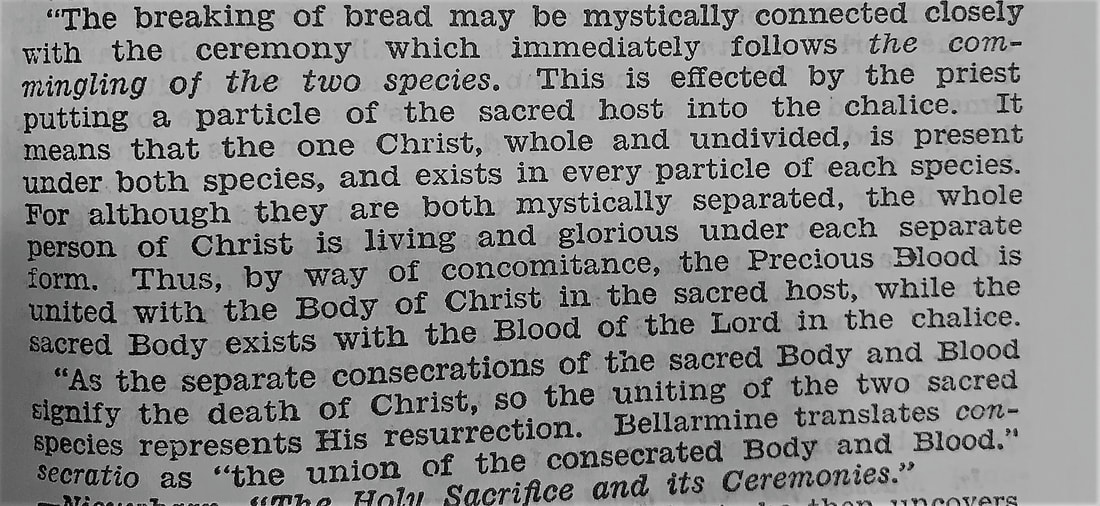|
When the priest said today that chances of conversion are not endless, his words got me thinking about math. When you roll just one die, there are six different ways the die can land [six chances]. When two dice are rolled, there are now 36 different and unique ways the dice can come up [36 chances]. This figure is arrived at by multiplying the number of ways the first die can come up (six) by the number of ways the second die can come up (six). 6 x 6 = 36. [courtesy of Ed Collins, edcollins.com] What if, instead, there is concomitance, the fact of occurring together? With one roll, we could get two three’s. Consider what the Missal says … Body and blood are separated at death. The crucifixion empties the body of its blood.
The priest separately consecrates the bread and wine, the two species that will become the body and blood. The concomitance, or fact of occurring together, is accomplished by putting a particle of the consecrated bread into the chalice of consecrated wine. Of course, God is three in one, and, in that sense, we get two three’s because of concomitance, and that is math theology! When near this blog, be careful how you tread, For there’s a lot of quicksand in my head.
0 Comments
Leave a Reply. |
Categories
All
Archives
July 2024
|

 RSS Feed
RSS Feed